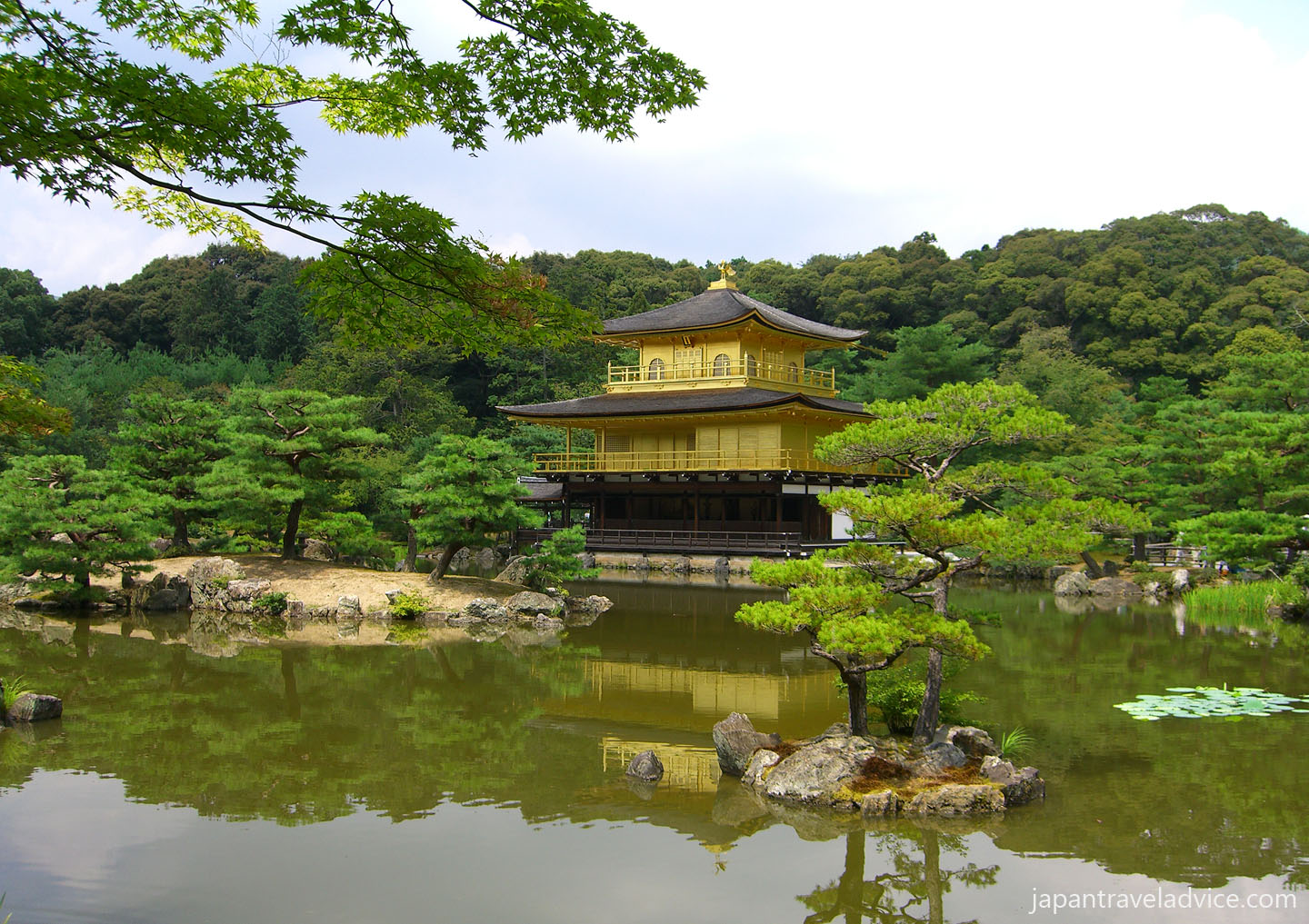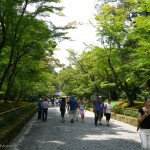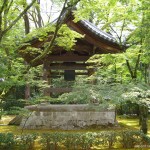
Kinkakuji Temple, also known as the Temple of the Golden Pavilion, is one of Japan’s best known sights. Located in Northern Kyoto, the original building was constructed in 1397 as a retirement villa for the shogun Ashikaga Yoshimitsu. It was later converted into a Zen Buddhist temple by his son after his death in 1408. Kinkakuji Temple later inspired Ginkakuji Temple (The Temple of the Silver Pavilion), which was built by Ashikaga Yoshimitsu grandson a few decades later.
Kinkakuji is recognised by UNESCO as a World Cultural Heritage Site, and is one of the 17 UNESCO World Heritage Sites that can be found in Kyoto.
The Belfry of Kinkakuji Temple

Design of Kinkakuji Temple
Kinkakuji is a three storey building on the grounds of Rokuon-ji (Deer Garden Temple), which is the formal name of the temple complex. Each floor of the building successfully incorporates a different architecture style.
The first floor is built in the shinden-zukuri style, which was used for palace buildings during the Heian Period. It was designed as an open space with adjacent verandas and uses natural unpainted wood and white plaster. This style helps to bring more emphasis on the beautiful surrounding landscape. The floor contains statues of the Shaka Buddha and Yoshimitsu. You cannot enter the pavilion, but can view the statues from across the pond.
The second floor is built in the buke-zukuri style, which was used in samurai residences. The floor consists of a Buddha Hall and a shrine dedicated to Kannon, the goddess of mercy.
The third floor is built in traditional zen style also known as zenshu-butsuden-zukuri. The building is topped with golden phoenix.
The top two storeys of the pavilion are covered with pure gold leaf.
The Garden of Kinkakuji Temple
Kinkakuji is set in a magnificent Japanese strolling garden and it extends over a large pond called Kyoko-chi (Mirror Pond) that reflects the building. The pond contains many large and smaller islands. The garden complex is an excellent example of Muromachi period garden design. This period is considered to be the classical age of Japanese garden design. The grounds were built to illustrate a harmony between heaven and earth.
Kyoko-chi – The Mirror Pond


Kinkakuji Points of Interest
A little further on from the mirror pond is another small pond, Anmintaku, which contains a stone pagoda called hakuja-no-tsuka.
Hakuja no tsuka Stone Pagoda

Just around the corner is a classic Tea House, called sekkaitei. It was added to Kinkakuji during the Edo Period and was restored in 1997.
History of Kinkakuji Temple
The site of Kinkakuji was originally a villa called Kitayama-dai, which belonged to a powerful statesman, Saionji Kintsune in the 1220’s. In 1397 it was purchased by the shogun Ashikaga Yoshimitsu and transformed into the Kinkakuji Temple complex as a retirement villa. After his death in 1408, it was converted into a Zen Buddhist Temple. Kinkakuji has unfortunately burned down many times throughout its history. The present structure was rebuilt in 1955.
Opening Hours
Kinkakaji is open from 9:00 am to 5:00 pm
Entry Fee
Adults: 400 yen
How to Get There
From JR Kyoto Station, take bus No 205 and get off at the Kinkaku-ji machi stop. The trip is around 40 minutes.
Address: 1 Kinkakuji-cho, Kita-ku, Kyoto-shi, Kyoto
Best Time to Go
Every season has something to offer, but winter is amazing after a snow fall when the grounds are covered in white snow.








